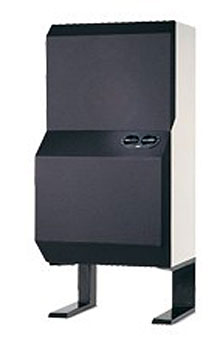| Columns Retired Columns & Blogs |
back in the 70's. Bought them to replace the IMF Studio III's that I had owned and could never warm up to. No contest. The B&W's were so much cleaner sounding and so much more refined. I moved on to 801's some years later, but I always had a soft spot for the "pregnant robots" as they were referred to back then. Heard a pair of DM6's recently, and was still impressed with their smooth, pleasant sound quality.
 The B&W DM-6 is the second "phase-coherent" speaker system we have tested. (The first was the
The B&W DM-6 is the second "phase-coherent" speaker system we have tested. (The first was the 




































